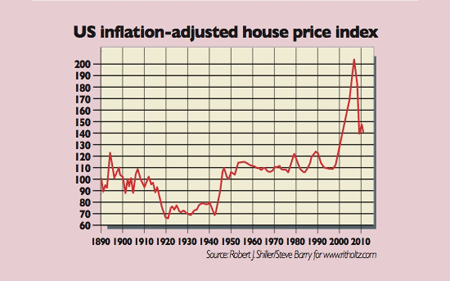
The US economy is making a gradual recovery, says Alan Abelson in Barron’s. But there’s still “one huge… hole” in it: the housing market. The widely-watched Case-Shiller index tracking prices in 20 major cities bounced in 2009 after plummeting from the 2006 peak. But the rebound, triggered by a government tax break, fizzled after the programme ended, and the index has trended down over the past few months.
Other measures also tell a grim tale. New house purchases hit a record low in February. The median price of an existing house recovered marginally last month – but from a nine-year low, according to the National Association of Realtors. Although on some measures US housing looks like “the bargain of a lifetime”, says Capital Economics, a sustained recovery is some way off. Indeed, the market is unlikely to have hit bottom yet.
Mortgage rates are at historic lows, but tighter credit standards at banks remain a problem. The proportion of banks reporting tougher mortgage standards reached a 16-year high in the first quarter of the year, according to the Federal Reserve’s Senior Loan officer Survey. A quarter of all homeowners are in negative equity and can’t move without incurring a loss on their house.
Unemployment, while gradually falling, is still high, while the slide in house prices has also undermined demand. Even as the economy improves, “there are some who will never buy a home” because their confidence in real estate “is gone”, says Michael Lea, finance professor at San Diego State University.
On the supply side, a balanced market typically has six months’ supply of unsold houses. The current market has eight. The supply overhang will get worse, as foreclosure filings have yet to peak. They will climb about 20% this year, reckons data provider RealtyTrac. This “additional and [currently] invisible” supply overhang implies further price falls, says Martin Hutchinson on Breakingviews. Analysts reckon that prices could decline by another 5%-10%.
The chart above, an inflation-adjusted index of the prices of existing houses, also points to further trouble. By this measure, the biggest housing bubble in American history has barely burst and there is still a long way to go before the market even begins to fall back to the historical average.